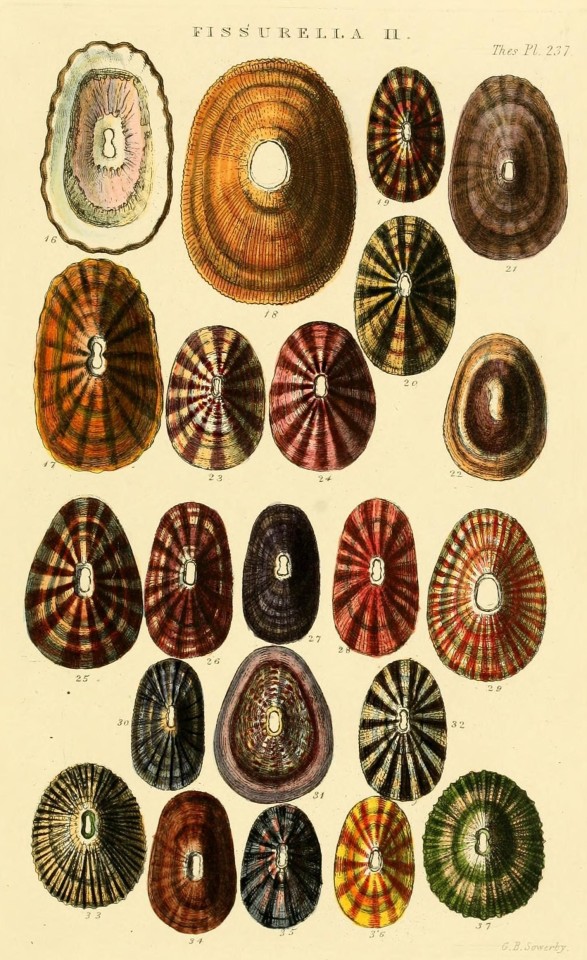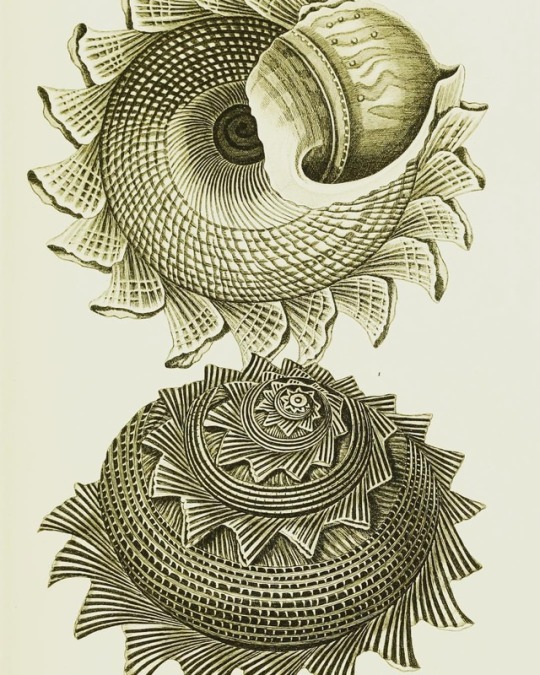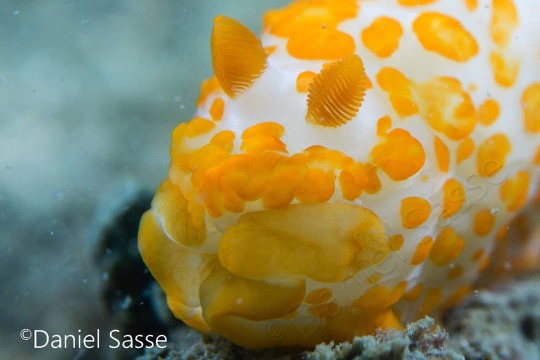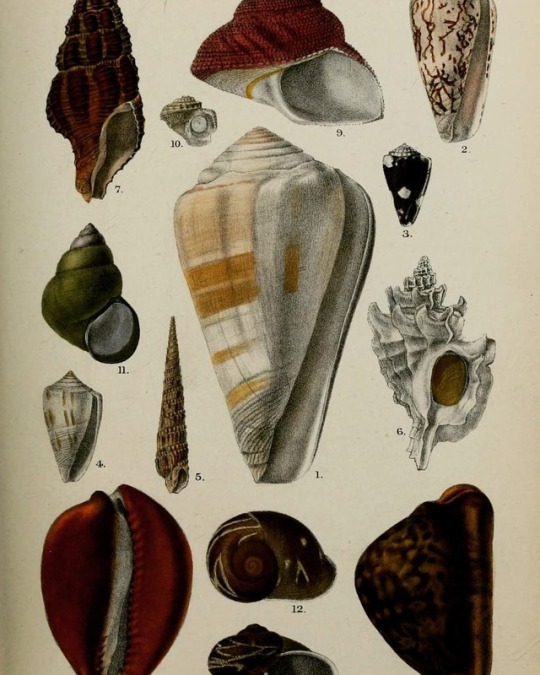#molluskmonday
Video
Slow glide. Take it easy. 😎
This little squid, Abraliopsis (Boreabraliopsis) felis was captured on camera by the remotely operated vehicle (ROV) Doc Ricketts in the Monterey Canyon at 362 meters (nearly 1,200 feet). These squid frequent the California Current and have been observed by MBARI researchers swimming with their tentacles interlocked (as in this video clip). They typically stay in deeper waters (300–600 meters or about 980–1,970 feet) during the day, and move upwards into shallower waters (less than 100 meters or about 330 feet) at night.
#@MBARI#mondaymood#mondaymotivation#mondayvibes#momentofzen#molluskmonday#foryoutumblr#justkeepswimming#takeiteasy
42 notes
·
View notes
Photo

Caloria indica #nudibranch #MolluskMonday https://www.instagram.com/p/CUT3gj8PH23/?utm_medium=tumblr
4 notes
·
View notes
Photo




Mollusk Monday
Explore the beautifully detailed shells from Thesaurus Conchyliorum, Vol. 3 (1866) by George Brettingham Sowerby on this #MolluskMonday. Digitized by @smithsonianlibraries for inclusion in @BioDivLibrary.
48 notes
·
View notes
Photo

When your ROV catches a squid doing the Karate Kid kick. 🥋🦑 . This species of Gonatus squid is one of the most common squids we see in the deep midwater. These squid grow rapidly, are active swimmers, and have among the highest metabolism of all cephalopods (octopus, squid, cuttlefish, and nautilus). They only spawn once in their lifetimes, and after the female successfully broods her single batch of eggs, she dies. . This animal is striking a defensive pose at the approaching ROV. Remotely operated vehicle (ROV) observations of these squid in their natural habitat have enabled scientists to learn a great deal more about their behaviors. . Reposted from @mbari_news . . . . . . . . . . . #MBARI #molluskmonday #mondaymood #deepsea #ocean #underwaterphotography #nature #explore #science #exploremore #wildlife https://www.instagram.com/p/CBeCXmmBSKq/?igshid=1ncxfll2hbjw2
#mbari#molluskmonday#mondaymood#deepsea#ocean#underwaterphotography#nature#explore#science#exploremore#wildlife
0 notes
Photo

Sunburst star turban (Astraea heliotropium) for #MolluskMonday! #SciArt from Bibliothèque Conchyliologique, Vol. 2 (1845) by Thomas Martyn, et al. Contributed for digitization by Ernst Mayr Library, Museum of Comparative Zoology, @harvard to #BiodiversityHeritageLibrary. https://biodiversitylibrary.org/page/12109134 _________________________________________________ #SunburstStarTurban #Shells #Mollusks #Molluscs #Mollusca #New Zealand #StarTrochus #Seashells #BHLib #Biodiversity #NaturalHistory #NatHist #ScientificIllustration #ScientificArt #OpenAccess #Libraries #Archives #SpecialCollections #LibrariesofInstagram #IGLibraries #IG_Libraries #MCZ
#nathist#molluscs#librariesofinstagram#openaccess#molluskmonday#shells#libraries#biodiversityheritagelibrary#sciart#naturalhistory#iglibraries#mollusca#specialcollections#archives#mcz#new#scientificillustration#mollusks#biodiversity#startrochus#scientificart#seashells#sunburststarturban#bhlib#ig_libraries
27 notes
·
View notes
Text
https://vm.tiktok.com/GbooF3/
This has me screaming
1 note
·
View note
Video
Saw this little fella speeding by!! #snail #slowsnail #speedysnail #snails #snailshell #lightingfast #nature #naturelovers #gastropod #mollusk #molluskmonday #youtube #youtuber #throbbnation https://www.instagram.com/p/BpN_BfRBZgN/?utm_source=ig_tumblr_share&igshid=17p7izcpot4n5
#snail#slowsnail#speedysnail#snails#snailshell#lightingfast#nature#naturelovers#gastropod#mollusk#molluskmonday#youtube#youtuber#throbbnation
0 notes
Photo

#Mondays are for the #mollusk . . . .@wsjoffduty @wsj @hmeldrom @vanessalvazquez @allisongumbel #clamchowder #staywarm #winterfood #molluskmonday #bringforththemollusk (at Williamsburg, Brooklyn)
0 notes
Photo











#MolluskMonday Oliva (genera & relates genus) II
Thesaurus conchyliorum, or, Monographs of genera of shells / edited by G.B. Sowerby, Jun., F.L.S. By Sowerby, G. B. (George Brettingham), 1812-1884 & Sowerby, G. B. (George Brettingham), 1843-1921 London :Sowerby ...,1847-1887.
Biodiversity Heritage Library (BHL) http://www.biodiversitylibrary.org/item/41590#page/7/mode/1up
0 notes
Link
Uncle Tim at the Carnegie giving us those sweet snail facts!
0 notes
Text
How to Wear Your Shell: Snail vs. Monoplacophoran
Do you wear your baseball cap with the brim in front or in the back? For some headgear, the orientation matters, for example, a football helmet worn in non-standard orientation might hinder your ability to see.
In most snails (gastropods), the shell coils over the tail. In some other mollusks, the shell coils over the head.
Torsion is a feature of all snails. Torsion is a 180° twisting of the head-foot with respect to the shell and internal organs, early in development. Torsion results in the anus being over the head (snails are real poop heads!). Why snails are torted remains a biological mystery, but a common hypothesis is that torsion also brings the gills and sensory organs to the front, and the anus just came along for the ride.
Snails have muscles that attach their bodies to the inside of their shells. Snails tighten these muscles to pull the body into the shell. A consequence of torsion is that the muscle scars (where muscles attach to the shell) are asymmetrical.
Monoplacophorans are a class of mollusks like snails except they do not undergo torsion. The lack of torsion means the shell coils over the head (in those having coiled shells). Furthermore, the muscle scars on their shells are symmetrical. Few monoplacophorans survive today, but they were more plentiful millions of years ago.
When I see snails in the funny pages in the newspaper, I notice that the cartoonists drew the shells in the standard orientation about half the time (50%, or random chance). When you see a cartoon snail with its shell in a non-standard orientation, you might wonder if it is really a monoplacophoran?
Next time you put on your baseball cap, think about how snails wear their shells, and remember the famous baseball snail: Slicky Mantle – he was quite a slugger – you should see him slide into home plate!

Cartoon mollusks with shell oriented as gastropod (left) and monoplacophoran (right). Illustration by Geoff Weber.
Timothy A. Pearce, PhD, is the head of the mollusks section at Carnegie Museum of Natural History. Museum employees are encouraged to blog about their unique experiences and knowledge gained from working at the museum.
162 notes
·
View notes
Photo

#molluskmonday Gymnodoris rubropapulosa is a cannibal #nudibranch it follows the trail and smell of other nudibranches and since it is much faster than most it can reach them in a short time. The nudi grows up to around 65mm in length. Taken by #Underwaterphotographer #DanielSasse #yourshotphotographer #Scubadiving #Aonang #Krabi #photooftheday #Marinelifeprotection #Ouroceans #Underwaterphotography #natgeo #nature #uwpic #Savetheoceans #Marineconservation #Oceandefender #Saveourseas #underwaterlife #fish #ecowarrior #natgeoyourshot https://www.instagram.com/p/CRxrDn0BMdF/?utm_medium=tumblr
#molluskmonday#nudibranch#underwaterphotographer#danielsasse#yourshotphotographer#scubadiving#aonang#krabi#photooftheday#marinelifeprotection#ouroceans#underwaterphotography#natgeo#nature#uwpic#savetheoceans#marineconservation#oceandefender#saveourseas#underwaterlife#fish#ecowarrior#natgeoyourshot
0 notes
Photo

Mollusk Monday: Greater Argonaut
The Greater Argonaut (Argonata argo) is an octopus that creates a thin shell around it, resembling the nautilus, another group of mollusks in the Mollusca phylum.
SciArt from Initiamenta Conchologica, or Elements of Conchology (1846) by Lovell Reeve, in Biodiversity Heritage Library via Smithsonian Libraries.
#HistSciArt#MolluskMonday#Mollusk Monday#Argonaut#Mollusca#Mollusks#Octopus#BHLib#Biodiversity Heritage Library#Smithsonian Libraries#Nautilus
36 notes
·
View notes
Photo

"New species of shells (circa 1880) from various localities" for #MolluskMonday! Phylum Mollusca #SciArt by A.H. Searle for the Proceedings of the Zoological Society of London (1880). Contributed for digitization by Natural History Museum Library & Archives (London) (@natural_history_museum) to #BiodiversityHeritageLibrary. http://www.biodiversitylibrary.org/page/28522673 _________________________________________________ #Shells #Mollusks #Molluscs #Mollusca #Seashells #BHLib #Biodiversity #NaturalHistory #NatHist #ScientificIllustration #ScientificArt #OpenAccess #Libraries #Archives #SpecialCollections #LibrariesofInstagram #IGLibraries #IG_Libraries #NHMLondon
#sciart#specialcollections#librariesofinstagram#mollusca#nathist#scientificillustration#naturalhistory#iglibraries#molluscs#mollusks#biodiversity#shells#libraries#ig_libraries#bhlib#biodiversityheritagelibrary#molluskmonday#scientificart#nhmlondon#archives#seashells#openaccess
50 notes
·
View notes
Link
I’m late but GET INTO MOLLUSK MONDAY people! Our awesome uncle over at the Carnegie Natural History Museum is a blast! LOVE HIM
0 notes